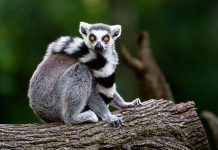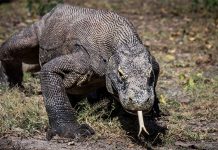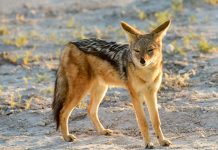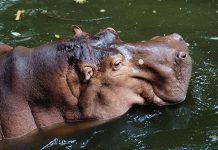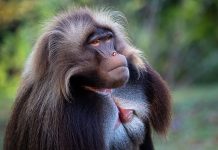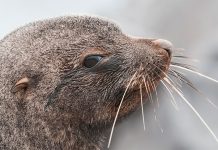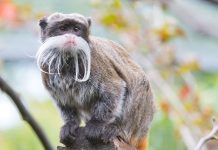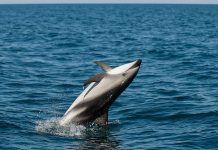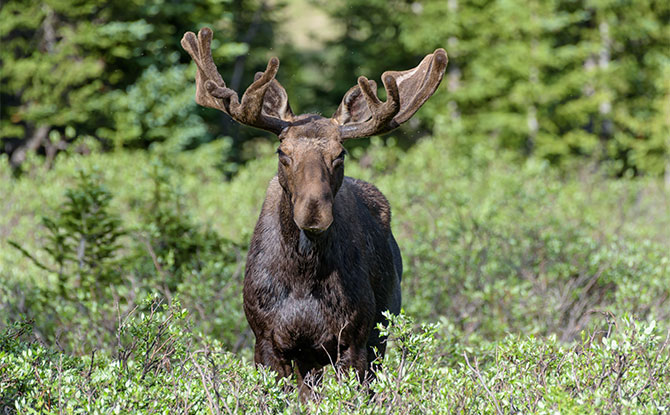

Are you curious about animals that start with M? Let’s explore a fascinating array of creatures from the animal kingdom whose names begin with the letter M. From mammals to birds, fish, and even insects, you’ll discover the diverse and captivating world of these animals.
Animals Starting With M
Whether you’re an animal lover, a student researching for a school project, or simply looking to expand your knowledge, this article will provide you with interesting facts and insights about animals that start with M. Let’s dive in and explore the wonders of the animal kingdom!
Mouse
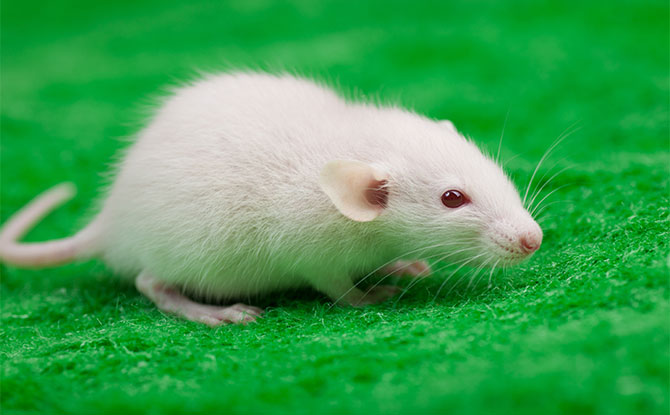

The mouse is a small rodent known for its agility and adaptability. It is a common species found throughout the world, particularly the house mouse (Mus musculus).
GIVEAWAY: Stand to Win Tickets to Peter & Blue's Treasure Hunt by Singapore Ballet
GIVEAWAY: Stand to Win a Family Bundle of 4 Tickets to Leonardo! A Wonderful Show About A Terrible Monster at LIttle SIFA.
House mice are highly adaptable and able to thrive in a variety of habitats. They are small omnivorous animals, consuming a diverse range of foods such as seeds, grains, fruits, and insects. This varied diet allows them to survive in various ecosystems.
House mice play a significant role in ecosystems, serving as both prey and predators for other animals. Their scientific name is Mus musculus, reflecting their classification in the Mus genus.
From urban settings to rural areas, house mice have successfully made themselves at home. Their ability to adapt and breed rapidly also makes them a common presence in human dwellings and agricultural fields.
Monkey


Monkeys are a diverse group of primates found in various habitats around the world. There are over 260 known species of monkeys, including the popular chimpanzee, gorilla, and orangutan.
These fascinating creatures are highly intelligent and social animals, known for their curiosity and playful nature. Monkeys have a wide range of diets, feeding on fruits, leaves, insects, and even small vertebrates. They are well-adapted to their habitats, whether it be the rainforests of South America or the savannas of Africa.
Monkeys play a significant role in their ecosystems, aiding in seed dispersal and contributing to the balance of their respective habitats. With their dexterous hands and remarkable agility, monkeys have captivated humans for centuries with their remarkable behavior and close resemblance to humans.
Moose


The moose, also known as the elk in Europe, is the largest species of deer in the world. They are found in forested areas of North America, Europe, and Asia. Moose are herbivores, feeding on a variety of plant matter including leaves, bark, and twigs.
They are known for their unique antlers, which are shed and regrown each year. Moose are solitary animals and are known for their impressive size and strength.
Manta Ray
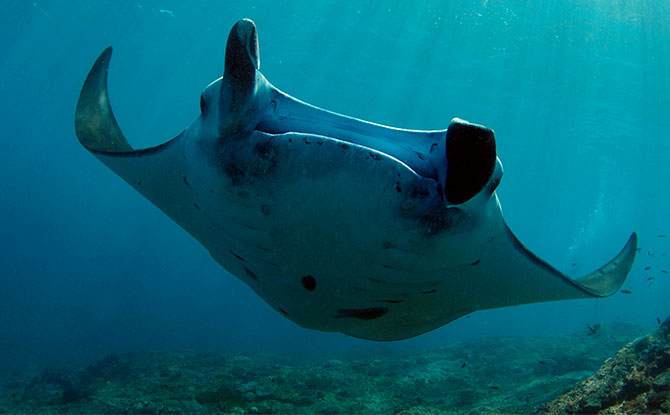

The manta ray is a fascinating marine creature known for its graceful movements and large size. Found in tropical and subtropical waters around the world, the manta ray is a captivating sight for scuba divers and snorkelers. With its filter-feeding habits, the manta ray subsists on a diet of plankton and small fish. This incredible marine species boasts a wingspan that can reach up to 23 feet, making it one of the largest rays in the ocean.
Despite its impressive size, the manta ray poses no harm to humans and is entirely harmless. Its gentle nature and stunning beauty make it a sought-after sighting for underwater enthusiasts.
Manatee
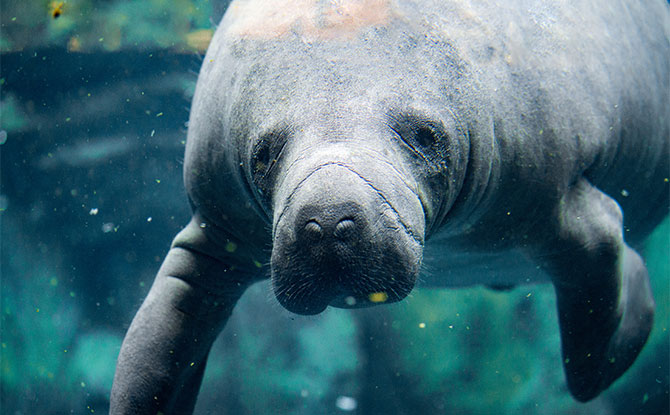

The manatee, also known as the sea cow, is a gentle marine mammal found in warm waters around the world.
There are three known species of manatees: the West Indian manatee, the Amazonian manatee, and the West African manatee. Manatees are herbivores, feeding on aquatic plants. They have a large, round body and paddle-like flippers, which help them navigate through the water. Manatees are known for their slow movements and peaceful nature.
Mongoose
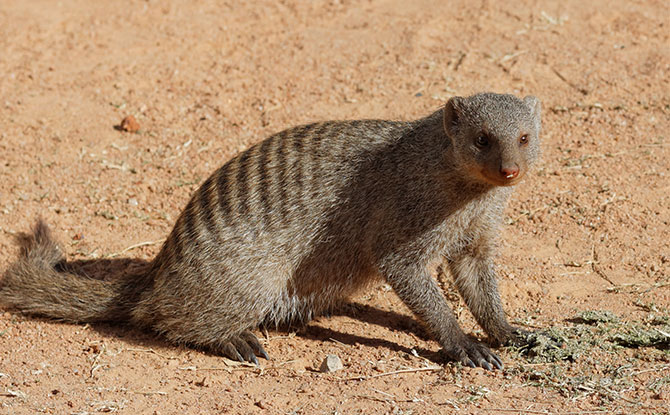

The mongoose is a small carnivorous mammal found in Africa, Asia, and parts of Europe. This fascinating creature belongs to the Herpestidae family and is known for its agility and hunting skills. There are about 30 known species of mongooses, one of the most popular being the meerkat.
Mongooses have a slender body, sharp claws, and a pointed snout, which help them in their hunting pursuits. They are highly adaptable and can thrive in a range of habitats, from forests to grasslands. These carnivorous mammals feed on a variety of prey including small mammals, birds, insects, and reptiles. Their diet is diverse, allowing them to survive in various ecosystems.
With their unique physical characteristics and behavioral adaptations, mongooses have become successful predators in their environments. They have a keen sense of sight and smell, which enables them to locate their prey. Mongooses are also known for their ability to stand on their hind legs, allowing them to get a better view of their surroundings.
Mule
The mule is a hybrid animal created by crossing a male donkey (jack) with a female horse (mare). Mules are known for their unique characteristics that make them valuable in various industries.
One of the key traits of mules is their impressive strength and endurance, inherited from their donkey ancestors. This makes them useful working animals in agriculture and transportation. Mules are often employed in farming, carrying heavy loads and plowing fields.
In addition to their physical abilities, mules also inherit intelligence from both their donkey and horse parents. They are known for being surefooted and reliable, making them ideal companions in rough terrains such as mountains and rocky areas.
Despite their strength and intelligence, mules are sterile and cannot reproduce. This unique characteristic sets them apart from both horses and donkeys, as it is the result of the breeding process between two different species.
Marmoset
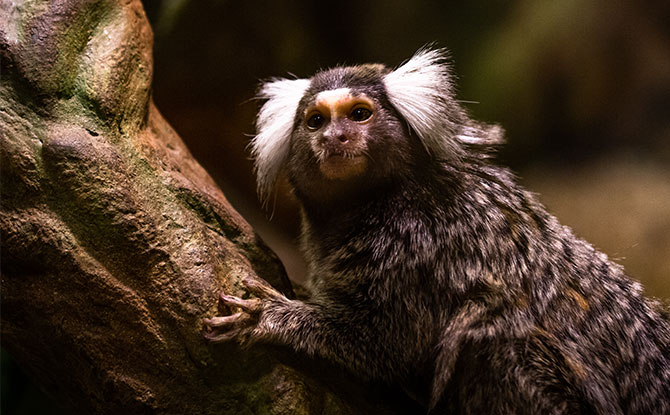

The marmoset is a small species of monkey found in South America. There are about 20 known species of marmosets, ranging in size and coloration. They are known for their distinctive tufted ears and long tails.
Marmosets are arboreal animals, spending most of their time in trees. They have adapted to their habitat by possessing specialized claws that allow them to climb and grasp branches with ease. Their small size makes them agile and capable of leaping from tree to tree.
Marmosets are highly social animals, living in family groups consisting of a breeding pair and their offspring. They communicate with each other through a combination of vocalizations, such as high-pitched calls and trills, and body language, including facial expressions and postures.
With regards to their diet, marmosets are omnivores, meaning they consume both plant and animal matter. Their diet consists primarily of fruits, flowers, nectar, and insects. They have specialized teeth and jaws that enable them to extract nectar from flowers and devour small insects.
Its small size and unique behaviors make it an interesting subject of study and observation.
Moth
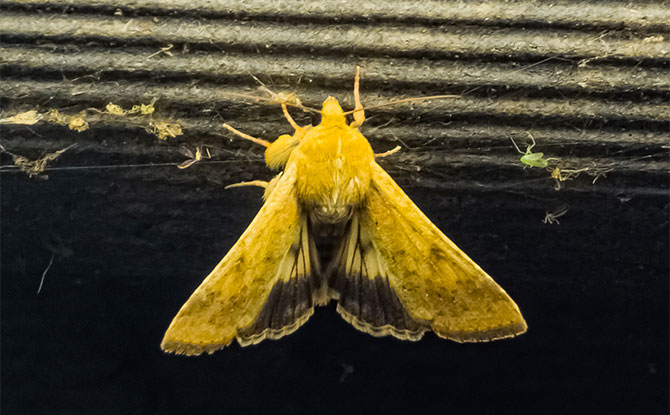

Moths are a fascinating group of insects known for their wings covered in scales. With over 160,000 known species, they are one of the most diverse insect groups in the world. Moths come in a variety of sizes, shapes, and colors, ranging from delicate and small to large and vibrant.
These beautiful creatures play crucial ecological roles as pollinators and as a food source for other animals in their habitats.
Moths can be found in a wide range of habitats, from lush forests to arid deserts. They have adapted to thrive in diverse environments, showcasing their remarkable resilience. Some species of moths are specialized to live in specific habitats, while others are more generalist and can inhabit various ecosystems.
One of the most fascinating characteristics of moths is their ability to undergo metamorphosis, transforming from eggs to caterpillars, then to pupae, and finally emerging as winged adults. This life cycle allows moths to successfully adapt to different environments and maximize their chances of survival.
While moths may sometimes be considered nocturnal pests due to their attraction to artificial light sources, they serve valuable ecological functions. As pollinators, moths play a crucial role in the reproduction of many plant species, including certain night-blooming flowers. Additionally, moths act as a vital food source for many animals, including bats, birds, and other insects.
Meerkat
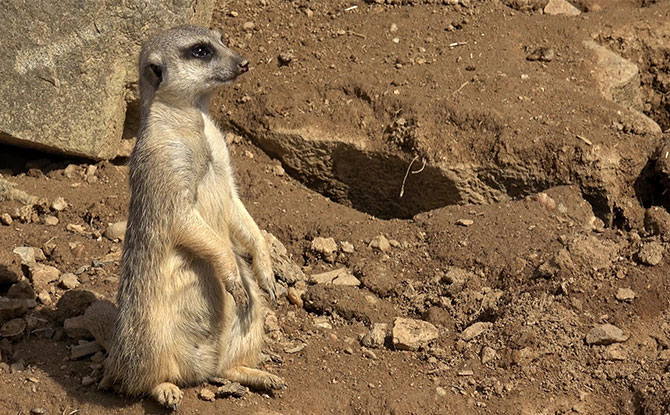

The meerkat is a small mammal found in parts of southern Africa. Known for its distinctive appearance, with a slender body and long, thin tail, the meerkat is a captivating creature. These social animals live in groups called mobs or gangs, where they exhibit highly cooperative behavior.
Meerkats are well-known for their upright posture and keen sense of alertness. They are always on the lookout for potential dangers in their habitat. Meerkats primarily feed on insects, but their diet also includes small vertebrates and plant matter.
Meerkats inhabit various types of habitat, including deserts, grasslands, and scrublands. They have adapted well to the harsh conditions of their environment. Their cooperative behavior extends to hunting, as they work together to catch prey and ensure the safety of the group.
Overall, meerkats are fascinating small mammals with unique behavior and a specialized diet. Their appearance, social structure, and habitat make them a captivating species to study and observe.
Magpie
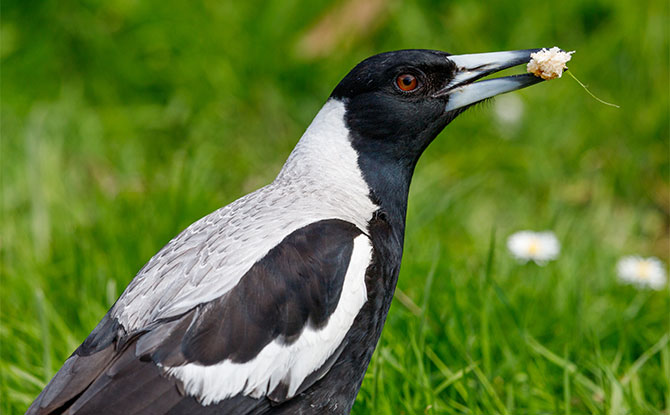

The magpie is a bird known for its striking black and white plumage and its ability to mimic sounds. There are several species of magpies found around the world. Magpies are highly intelligent and are known for their problem-solving abilities.
They are omnivorous, feeding on a variety of foods including insects, seeds, fruits, and small vertebrates. Magpies are highly adaptable and can be found in a variety of habitats including forests, grasslands, and urban areas.
Mole


Moles are small mammals known for their underground lifestyle and specialized adaptations for digging. They belong to several species found around the world. Moles have velvety fur, powerful front limbs, and specialized snouts for digging tunnels.
Their primary diet consists of earthworms and other invertebrates found in the soil. Moles are rarely seen above ground and spend most of their time in their intricate tunnel systems.
Mackerel
Mackerel are a group of fast-swimming fish found in both saltwater and freshwater. There are several species of mackerel, including the Atlantic mackerel and the Pacific mackerel. They have streamlined bodies, slim and tapered tails, and rows of small finlets along their dorsal and ventral sides.
Mackerel are carnivorous, feeding on smaller fish, crustaceans, and plankton. They are highly migratory and can be found in various oceanic habitats.
Marmot
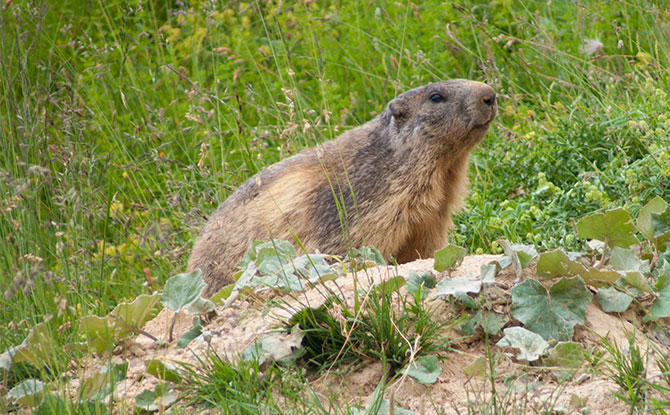

Marmots are large rodents found in mountainous regions of Europe, Asia, and North America. They have stocky bodies, short legs, and long tails. Marmots are known for their burrowing behavior and live in complex underground systems called burrows. They mainly feed on plant matter, including grasses, roots, and leaves.
Marmots are social animals, living in colonies and communicating through vocalizations and body language.
Mandrill
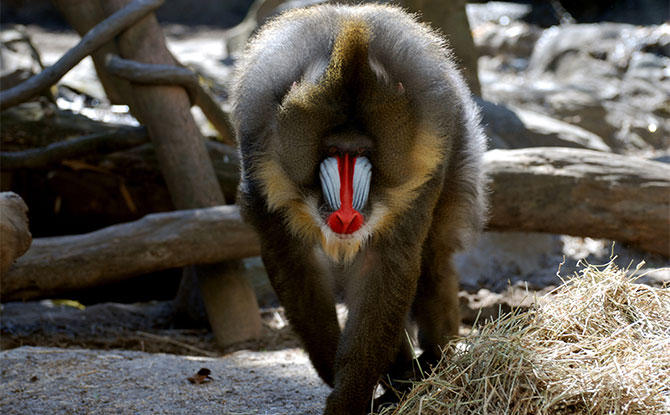

The mandrill is a primate species native to the rainforests of western central Africa. It is known for its vibrant facial markings, which can vary between individuals. Mandrills have a complex social structure, living in multi-male and multi-female groups.
As omnivores, mandrills have a varied diet that includes fruits, seeds, leaves, and insects. They are highly intelligent animals that engage in complex behaviors such as grooming, vocalizations, and facial expressions. Mandrills are charismatic creatures that captivate observers with their colorful appearance and captivating behaviors.
In their natural habitat, mandrills inhabit the dense rainforests, making use of the diverse plant life for shelter and foraging. They are well-adapted to life in the trees, using their powerful limbs and grasping hands to move through the forest canopy with ease.
The mandrill’s unique combination of striking visual characteristics and intriguing behaviors makes it an iconic species in the animal kingdom.
Mastiff


The mastiff is a large and powerful dog breed known for its imposing size and gentle nature. There are several breeds of mastiffs, including the English Mastiff and the Tibetan Mastiff. Mastiffs are known for their loyalty, protectiveness, and calm temperament.
They have a long history of working as guard dogs and family companions.
Muskox
The muskox is a large mammal found in Arctic regions of North America and Greenland. It is known for its thick coat of fur and long, curved horns. Muskoxen live in herds and have adapted remarkably to survive in harsh, cold environments.
One of the defining characteristics of the muskox is its impressive size. Adult males can weigh up to 900 kilograms (2,000 pounds) and stand at around 1.5 meters (5 feet) tall at the shoulder. The females, although slightly smaller, are still formidable in size.
The muskox has a unique defense mechanism called “musking.” When threatened by predators such as wolves, muskoxen release a strong odor from their specialized scent glands. This musk odor acts as a deterrent, warning predators to stay away.
Muskoxen are herbivores and primarily feed on grasses, lichens, and other plant matter. They have a specialized digestive system that allows them to extract nutrients from the tough vegetation found in their habitat. During the winter, when food is scarce, they use their hooves and horns to dig through the snow and reach the vegetation underneath.
These large mammals are incredibly well-suited to the cold Arctic climate. Their thick fur acts as insulation, keeping them warm even in freezing temperatures. The muskox’s undercoat is particularly dense and soft, providing additional protection against the elements.
The muskox’s habitat consists of tundra and mountainous regions where vegetation is abundant. Despite the harsh conditions, muskoxen have thrived in these environments for thousands of years. They are highly adapted to survive in the Arctic, with their ability to withstand extremely low temperatures and dauntless nature in the face of predators.
Macaw
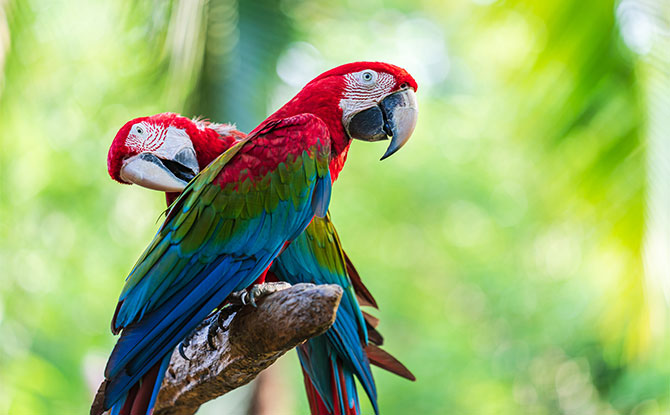

Macaws are colorful parrots found in the rainforests of Central and South America. With their vibrant plumage and powerful beaks, macaws are truly stunning birds. They are highly social creatures, living in flocks and engaging in complex vocalizations and behaviors.
There are several different species of macaws, each with its own unique characteristics. The Scarlet Macaw, for example, is known for its bright red and blue feathers, while the Blue and Gold Macaw has striking blue and yellow plumage.
Macaws have long, pointed wings that allow them to soar through the trees of their rainforest habitat with ease.
When it comes to diet, macaws are not picky eaters. They feed on a variety of foods including fruits, nuts, seeds, and vegetation. In the wild, macaws have been observed eating fruits and nuts from a wide range of rainforest trees. This varied diet ensures that they receive all the necessary nutrients to thrive.
Macaws are sought after as pets for their beauty and intelligence. They are highly vocal birds and can be quite loud.
Maned Wolf
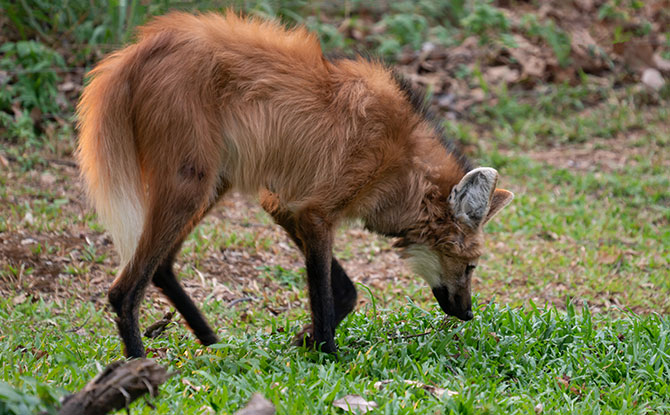

The maned wolf is a unique canid species native to South America. It is known for its long legs, reddish-brown fur, and distinctive mane, which gives it a regal appearance. Despite its name, the maned wolf is not closely related to wolves. In fact, it is the largest canid species in South America.
The maned wolf is primarily a solitary animal, roaming the grasslands and savannas of Brazil, Argentina, and other countries in the region. Its omnivorous diet includes a variety of foods such as fruits, small vertebrates, and vegetation. This adaptability in diet allows the maned wolf to thrive in its habitat and maintain its population.
The maned wolf plays a crucial role in its ecosystem as a predator and seed disperser. Its presence helps regulate the population of small prey animals and contributes to the growth and diversity of plant species in its habitat.
Minnow
Minnows are a group of small fish found in freshwater habitats around the world. These small fish come in numerous species, each with its own unique characteristics and adaptations.
One of the defining features of minnows is their small size, making them a popular choice for home aquariums. They are often valued for their vibrant coloration and lively behavior, adding beauty and movement to any aquatic display.
Minnows are highly adaptable and can thrive in a variety of conditions. They can be found in streams, rivers, lakes, and ponds, where they play an important role in the local ecosystem. As small fish, they provide a valuable source of food for larger fish and aquatic predators.
Minnows are opportunistic feeders, meaning they consume a diverse array of food sources. Their diet typically includes small invertebrates such as insects, crustaceans, and worms. They also feed on plant matter, including algae and aquatic vegetation.
These small fish are known for their ability to reproduce quickly, allowing their populations to rebound rapidly after disturbances or predation. This rapid reproductive rate ensures the sustainability of minnow populations and their crucial role in the aquatic food web.
Mallard


The mallard is a species of duck found in various habitats throughout North America, Europe, and Asia. They are the most abundant and widespread duck species in the world.
Mallards have a mottled brown plumage, with males displaying a distinctive green head and yellow bill. They are omnivores, feeding on a variety of aquatic plants, insects, and small vertebrates. Mallards are highly adaptable and can be found in both urban and rural environments.
Mule Deer
The mule deer is a species of deer found in western North America. They are characterized by their large ears, which resemble those of a mule.
The mule deer has a reddish-brown fur with a distinctive white patch on its rump. These deer primarily feed on a variety of plant matter, including leaves, twigs, and shrubs, making them browsers. Their preferred habitats include forests, mountains, and grasslands, showcasing their high adaptability to different environments. With their unique characteristics and versatility, mule deer are an iconic species of deer in North America.
Myna Bird
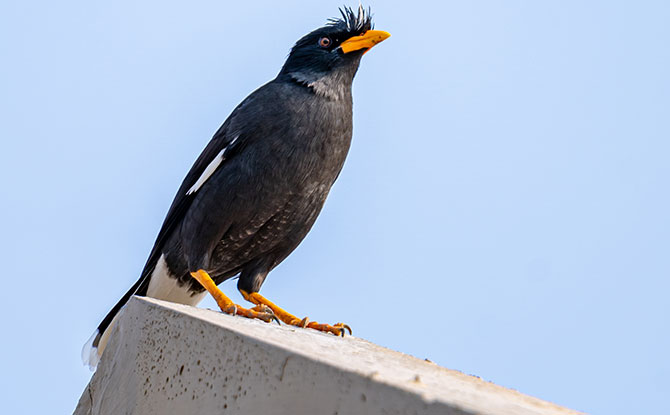

Myna birds, also known as mynah birds, are a group of passerine birds found in Asia. They belong to the Sturnidae family and are known for their distinctive calls and vocalizations. There are several species of mynas, including the Common Myna (Acridotheres tristis), the Hill Myna (Gracula religiosa), and the Javan Myna (Acridotheres javanicus).
Myna birds have a dark plumage with bright patches of color on their beak and eyes, making them visually striking. They have a strong and hooked beak, which they use for foraging and manipulating food. The size and appearance of mynas vary among the different species, but they generally have a compact body and a slender tail.
These omnivorous birds have a diverse diet, feeding on a variety of foods to meet their nutritional needs. Their diet consists of fruits, seeds, insects, and small vertebrates. Mynas are opportunistic feeders and can adapt to various food sources available in their habitats.
Myna birds are highly social and often seen in large flocks, which can be noisy and active. They are known for their ability to mimic human speech and other sounds, making them popular pets and performers. Mynas use their vocalizations for communication, territory defense, and attracting mates.
The natural habitats of myna birds include open woodlands, urban areas, farmlands, and gardens. They are adaptable and can thrive in both natural and urban environments. Mynas are known for their adaptability and have successfully colonized new territories outside of their native range.
Mink
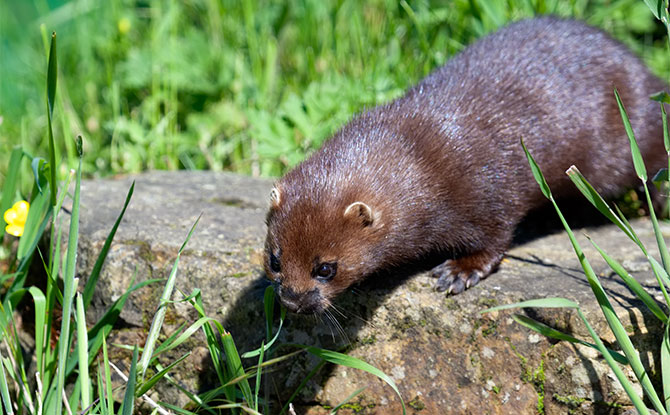

Minks are semi-aquatic mammals found in North America, Europe, and Asia. These sleek and agile creatures are known for their beautiful fur and adaptability to water. With their slender bodies, short legs, and partially webbed feet, minks are built for swimming and diving in search of prey.
As carnivorous mammals, minks have a diverse diet that includes fish, amphibians, small mammals, and birds. Their sharp teeth and strong jaws allow them to catch and consume their prey with ease. Minks are skilled hunters, using their agility and keen senses to locate and capture their next meal.
Minks are highly adaptable animals capable of surviving in various aquatic habitats. They can be found in rivers, lakes, wetlands, and even coastal areas. Their ability to navigate these diverse environments has contributed to their success as a species.
With their sleek fur, minks are well-suited to their aquatic lifestyle. Their dense and waterproof coats provide insulation, keeping them warm in cold waters. The fur is also highly valued in the fur trade industry.
Minks are fascinating mammals with unique adaptations for their semi-aquatic lifestyle. Their agility, sleek fur, and carnivorous diet make them well-suited to their underwater habitat.
Mollusk
Mollusks are a diverse group of invertebrates that can be found in marine and freshwater habitats worldwide. This group includes a wide variety of organisms, such as snails, clams, squids, and octopuses. Mollusks have a soft body that is usually protected by a hard shell. They exhibit a remarkable diversity in terms of species, characteristics, habitat preferences, and feeding strategies.
One of the defining characteristics of mollusks is their incredible adaptability. They have evolved to thrive in various environments, including oceans, freshwater rivers, and even land. Mollusks play important ecological roles as filter feeders, herbivores, and predators, contributing to the balance and functioning of their respective ecosystems.
The diet of mollusks largely depends on their specific species. Some mollusks are filter feeders, consuming small planktonic organisms and organic matter suspended in the water. Others are herbivores, feeding on algae or plant material. Additionally, there are mollusk species that are predators, preying on other invertebrates or even small fish.
These invertebrates exhibit a wide range of physical characteristics and forms. Some have a single muscular foot enabling them to move along surfaces, while others have tentacles or appendages that aid in capturing food or manipulating their environment. Mollusks come in various sizes, shapes, and colors, showcasing the incredible diversity found within this group.
Mockingbird
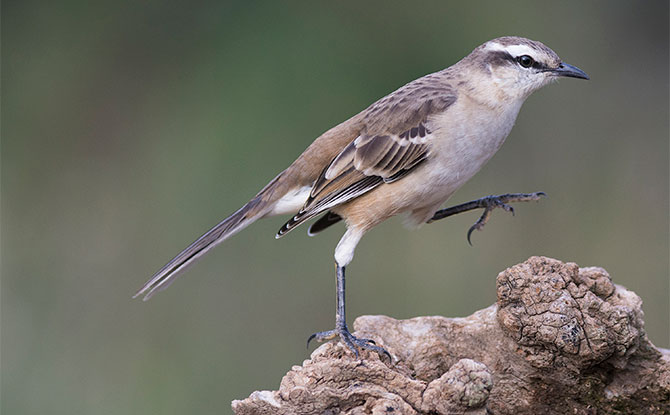

Mockingbirds are a fascinating group of birds found in the Americas. They are known for their remarkable ability to mimic the songs of other birds and even replicate various sounds from their environment. With their grayish-brown plumage and distinctive white wing patches, mockingbirds are easily recognizable.
These omnivorous birds have a diverse diet, feeding on a wide range of foods such as fruits, insects, and seeds. Their adaptability when it comes to food sources allows them to thrive in various habitats, from lush forests to bustling urban areas. It’s not uncommon to spot mockingbirds in gardens and parks, where they add a delightful touch to the surroundings with their melodious and complex songs.
Mockingbirds are highly vocal birds, and their ability to imitate a wide array of sounds has earned them their name. While they primarily mimic the songs of other birds, they are also known to imitate sounds such as car alarms and cell phone ringtones. This unique talent adds to their charm and makes them a favorite among birdwatchers and nature enthusiasts.
If you enjoyed these fun facts about animals starting with M, we think that you will enjoy this list of animals starting with L.







